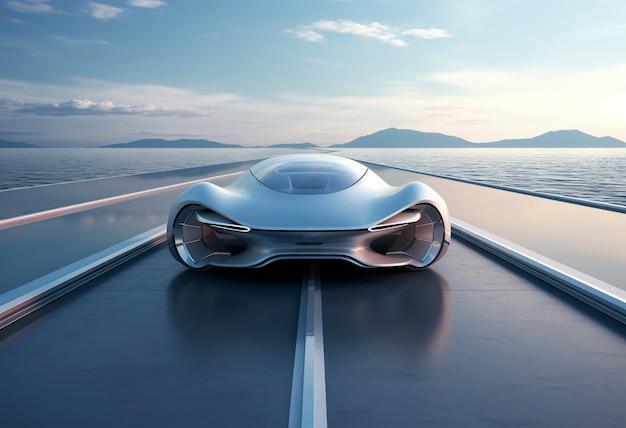
Volkswagen is pushing its electric vehicles to compete directly with gasoline-powered cars, and now it’s replacing one of its well-known models with an electric version. The VW ID.4 is presented as an electric alternative to popular gasoline SUVs, while the ID.Buzz plays on nostalgia. The Volkswagen ID.7 steps in to fill the gap left by the Passat, which stopped production in 2022 after nearly 50 years as a staple sedan in the U.S.
Expected to go on sale in the U.S. in 2024 and previously previewed at CES 2023, the ID.7 aims to revitalize the sedan market with its electric power, advanced technology, and aerodynamic design, similar to other ID models. However, it faces competition from other electric sedans like the Hyundai Ioniq 6, Polestar 2, and Tesla Model 3.
The design of the ID.7 is consistent with other ID models, featuring slim headlights without a traditional grille, rounded edges, and sloping elements along the sides reminiscent of eroded cliff faces. These design choices aim to reduce aerodynamic drag and create a unique EV appearance.
In terms of size, the ID.7 is longer by 1.7 inches compared to the Passat, with a wheelbase that is longer by 6.4 inches, enhancing interior space. It’s also wider and taller than the Passat, positioning it among midsize sedans like the Honda Accord and Toyota Camry, yet with a luxurious twist similar to the VW Arteon.
Dimensionally, the ID.7 is the largest VW sedan, larger than models like the Hyundai Ioniq 6, Polestar 2, and Tesla Model 3. Despite being longer than these models, its wheelbase is comparable to the Hyundai, and it stands as the tallest, surpassing the Tesla by about four inches.
Inside, the ID.7 includes a 15-inch touchscreen for most functions, like climate control and seat adjustments. VW retained the touch sliders for audio and temperature control from previous models, but also added voice control for convenience. The driver interface is upgraded with a sophisticated head-up display featuring augmented reality, showing essential information like speed, speed limits, and navigation directions right in the driver’s line of sight.
The vehicle includes advanced driver assistance features, with an enhanced Travel Assist system that supports automated lane changes, similar to Hyundai’s and Nissan’s systems, but not as advanced as General Motors’ Super Cruise. Automated parking is also available.
At launch, the ID.7 will come with an 82-kilowatt-hour battery pack, with a Pro S model featuring a 91-kWh pack arriving later. While U.S. range figures are not yet available, VW estimates a range of 382 miles with the smaller pack and 435 miles with the larger pack based on European testing. Some versions of the ID.7 may likely exceed 300 miles in U.S. testing.
The ID.7 introduces a new, more efficient motor producing 282 horsepower, a significant increase over the single-motor versions of previous VW models like the ID.4 and ID.Buzz. A dual-motor all-wheel-drive version is expected to follow the initial release.
Charging capabilities include DC fast charging at 170 kilowatts with the smaller pack and 200 kW with the larger one. The system includes battery preconditioning to help reach these rates more consistently.
Given the ID.7’s late arrival, pricing details are not yet clear. Since the ID.4 is VW’s entry-level EV, the ID.7 is unlikely to be the cheapest option, aligning more closely with the premium pricing of the Hyundai Ioniq 6, Polestar 2, and Tesla Model 3 once options are added.
Offering an electric sedan like the ID.7 shows VW’s commitment to making EVs widely appealing. While launching with an electric SUV like the ID.4 made sense due to their current market popularity, providing a variety of vehicle options is crucial. With its electric power and advanced features, the ID.7 offers a compelling alternative to SUVs for EV buyers.